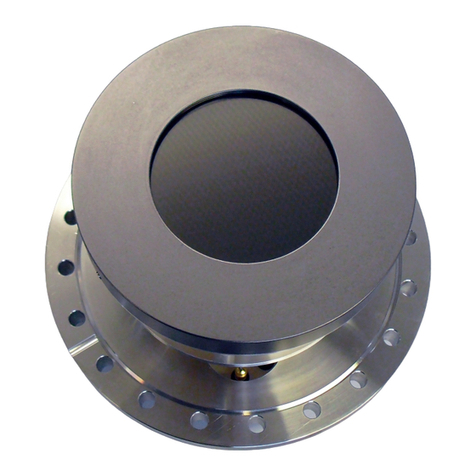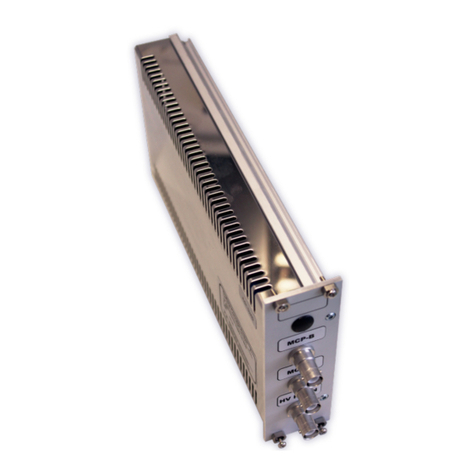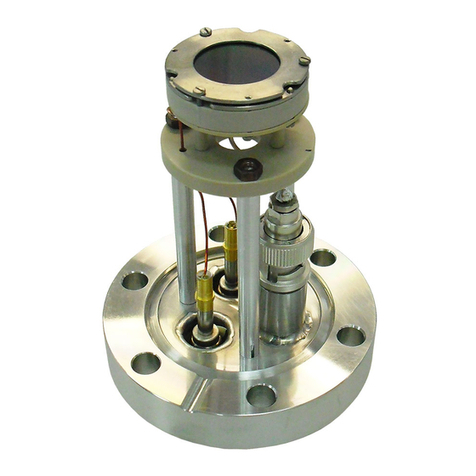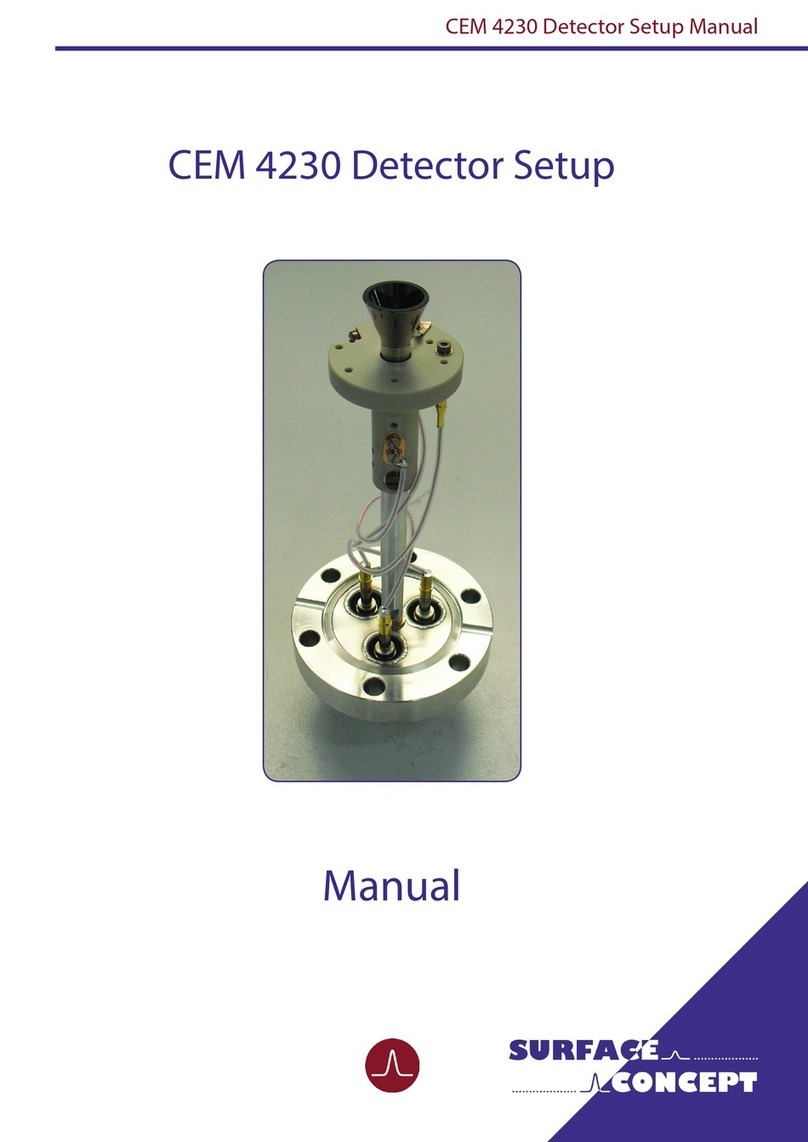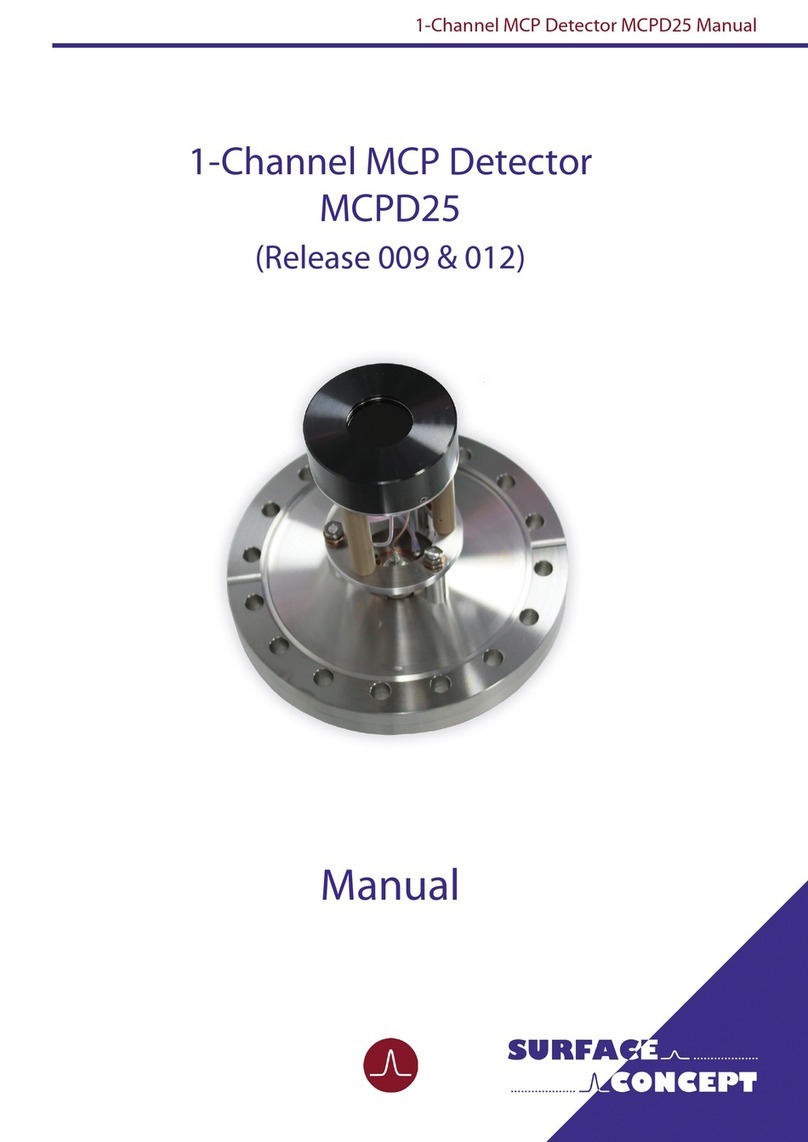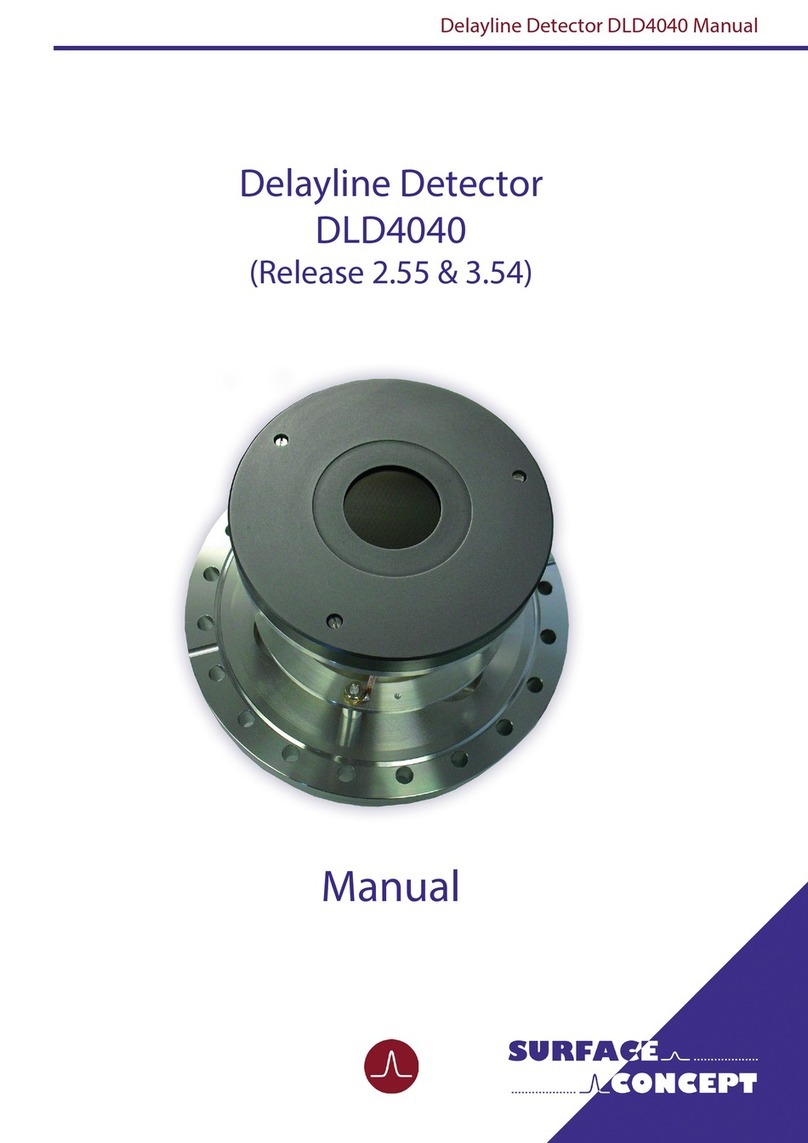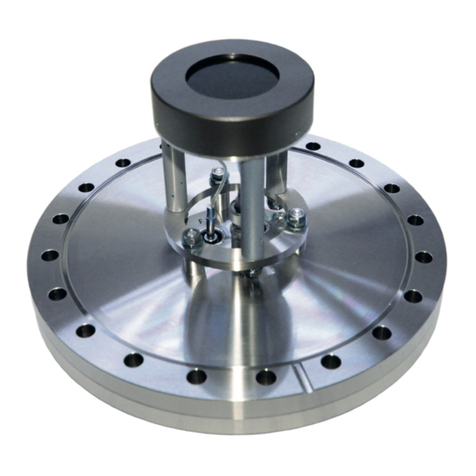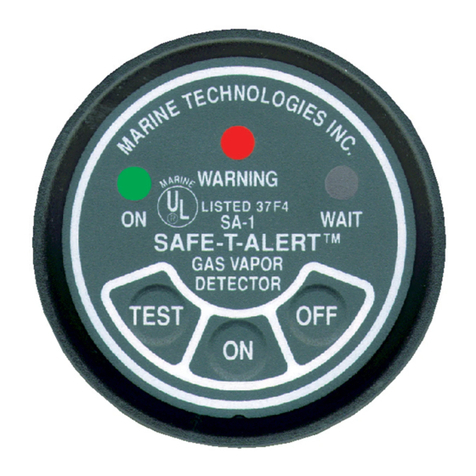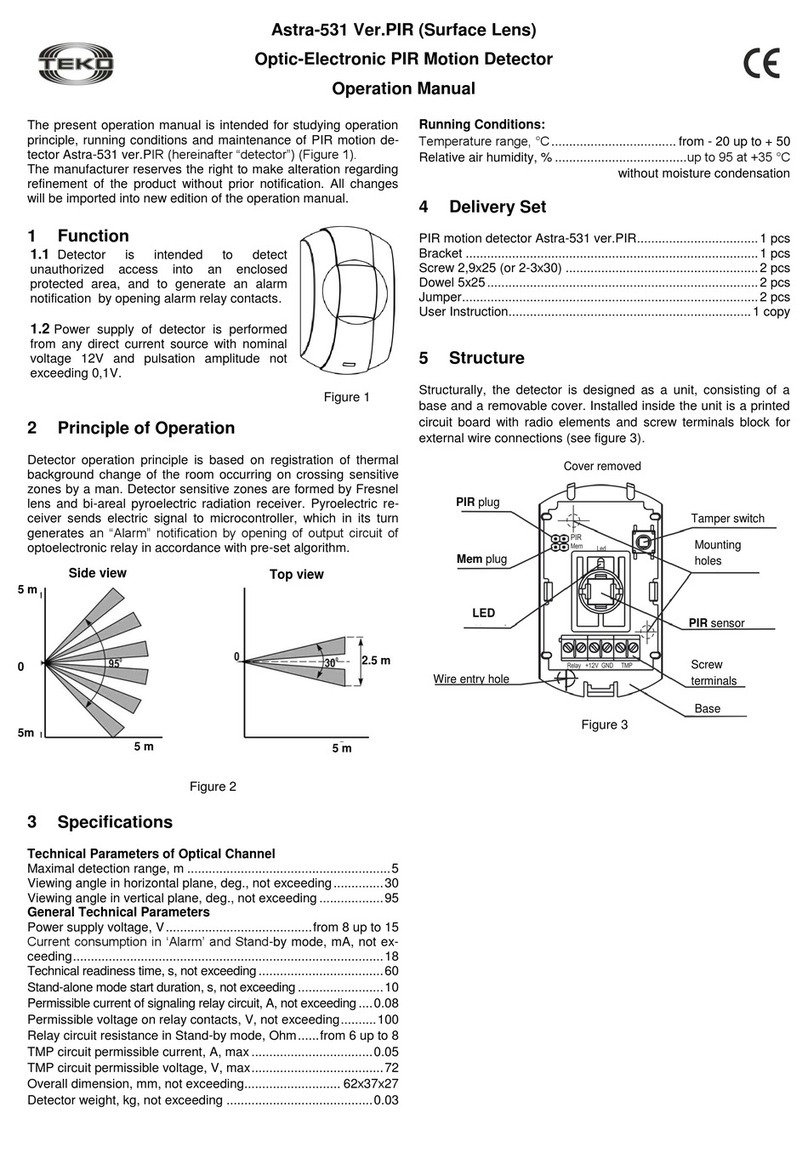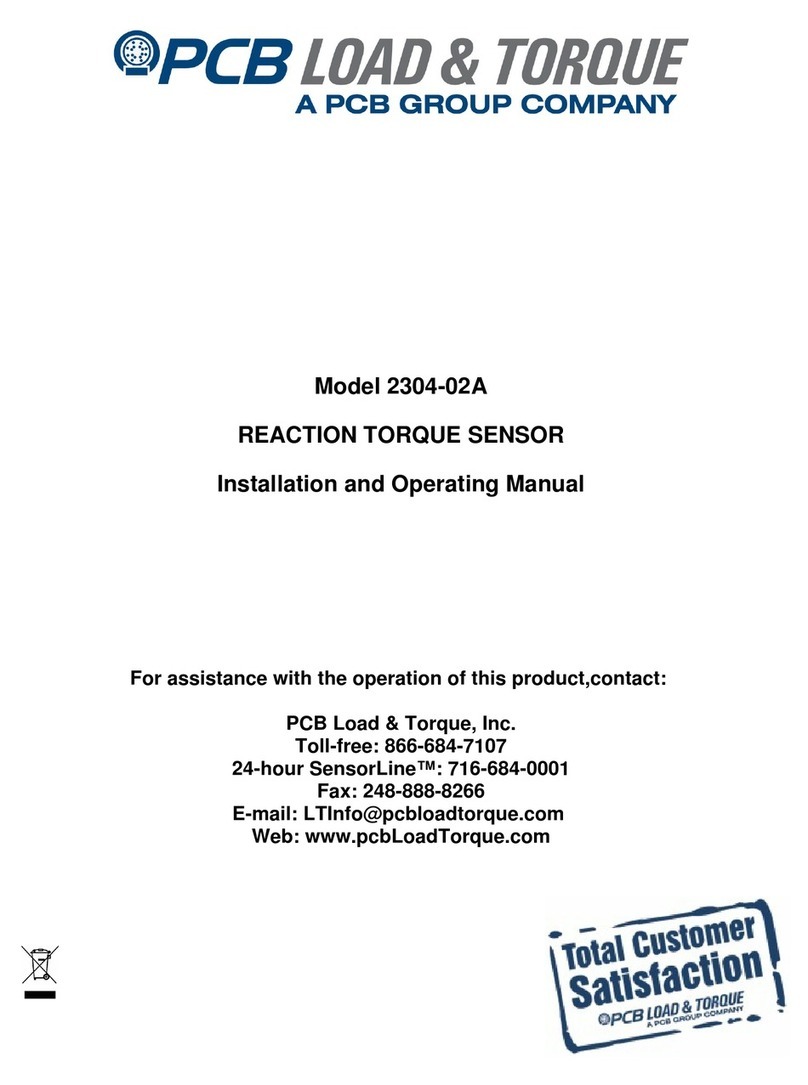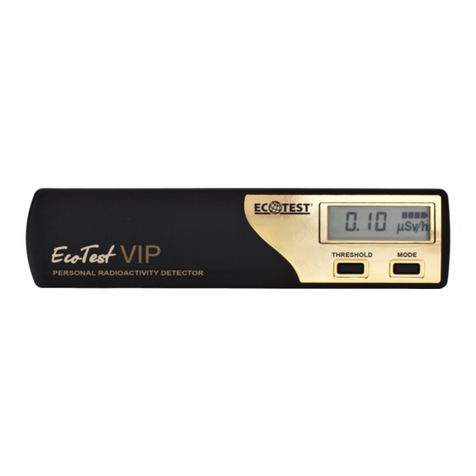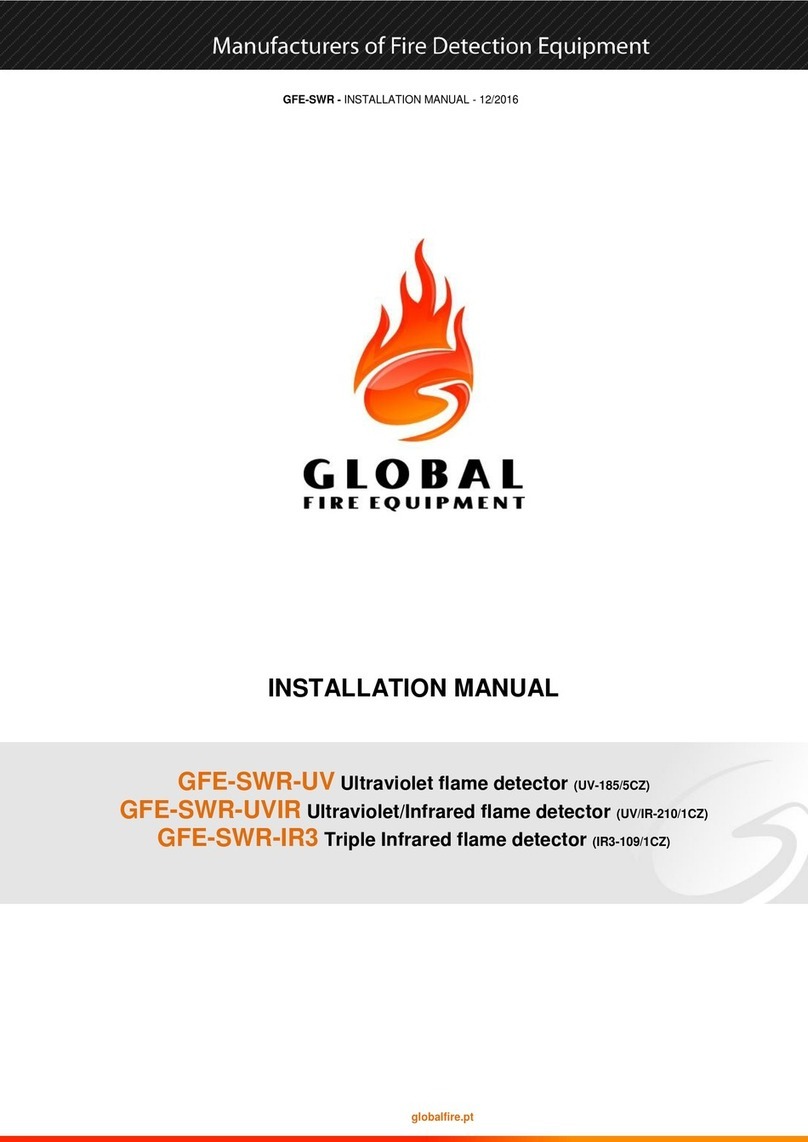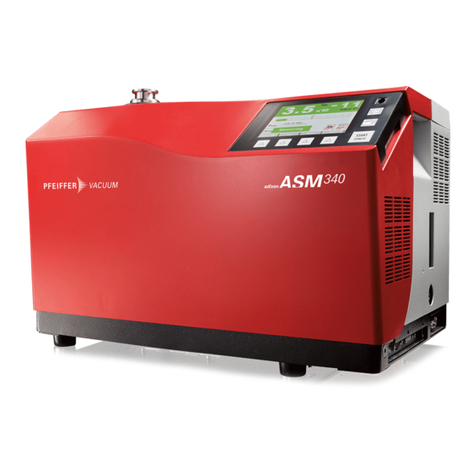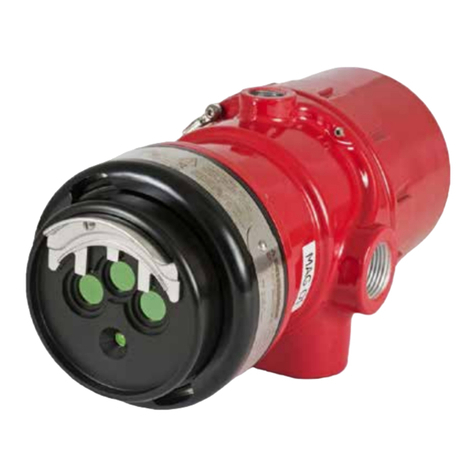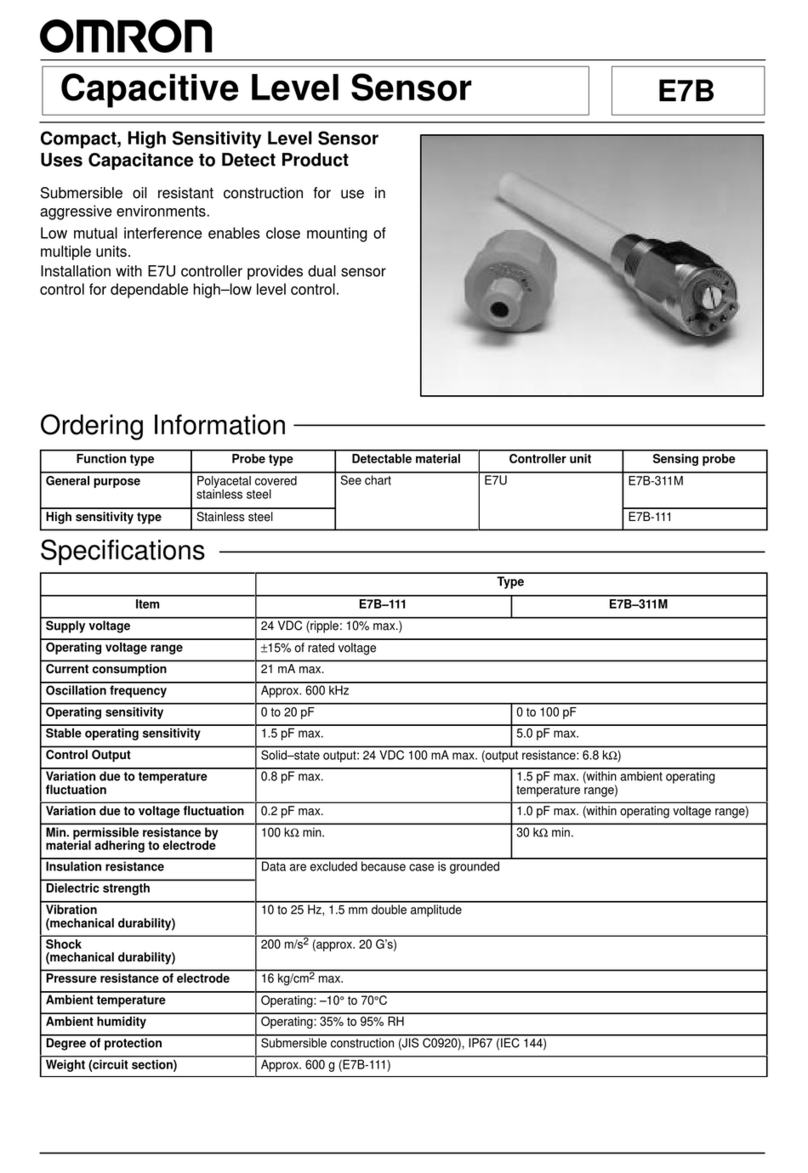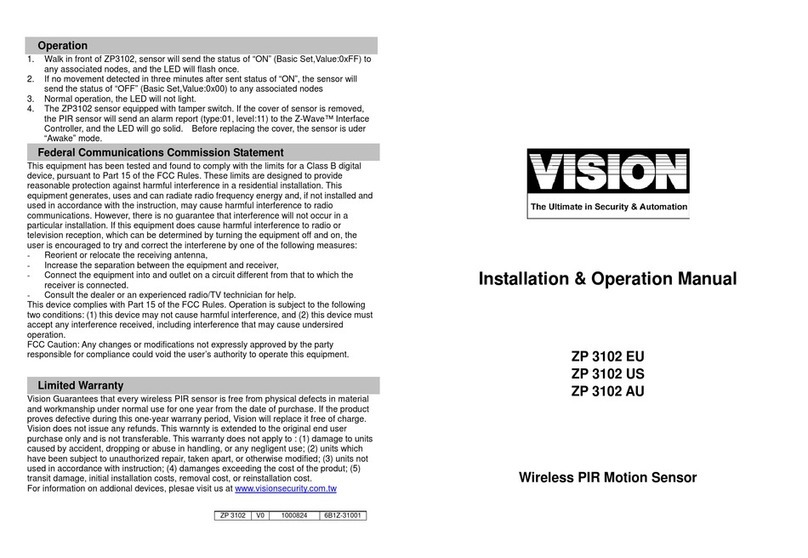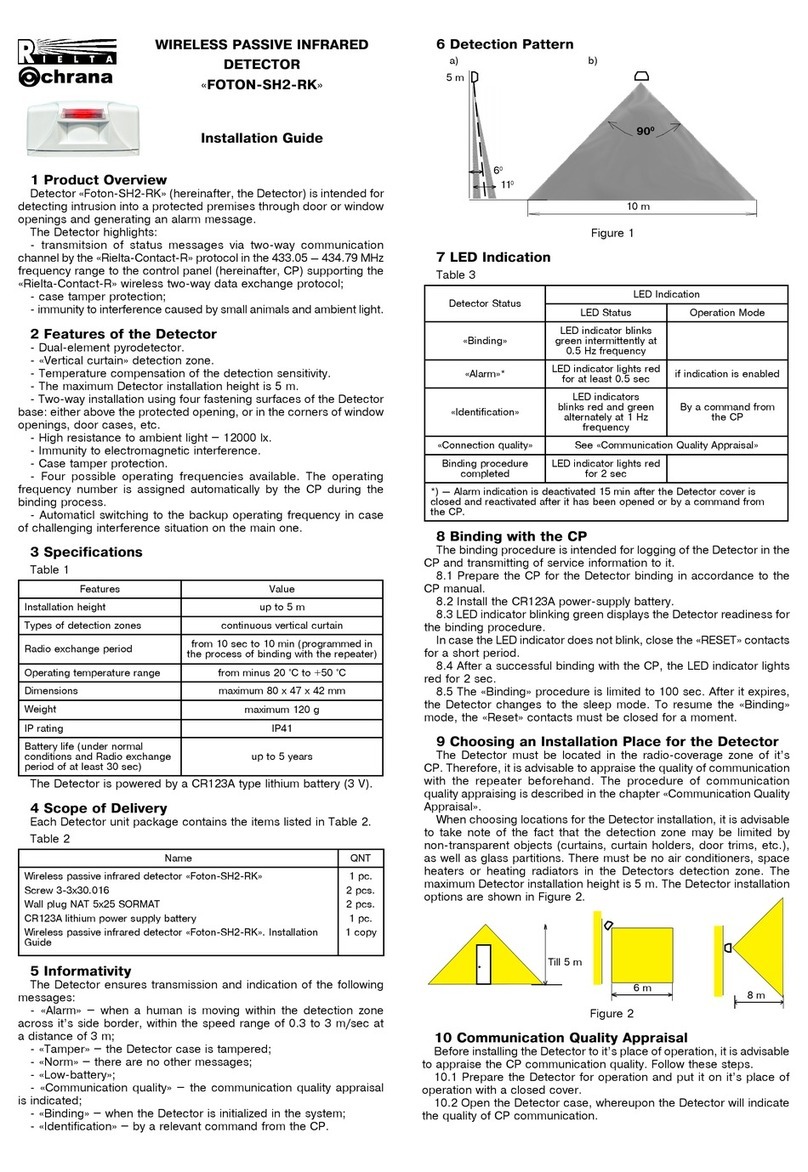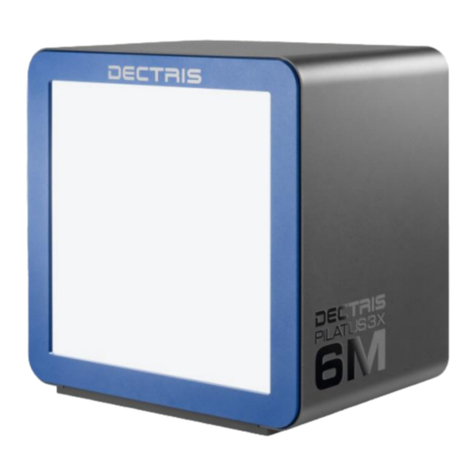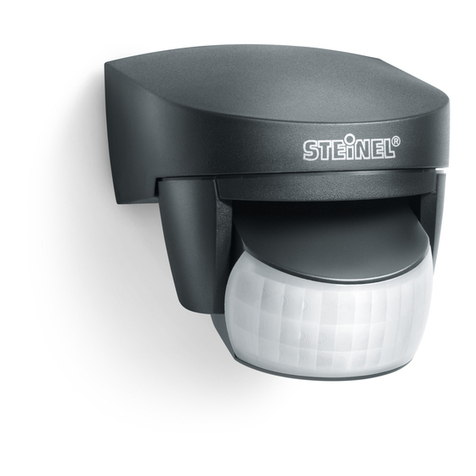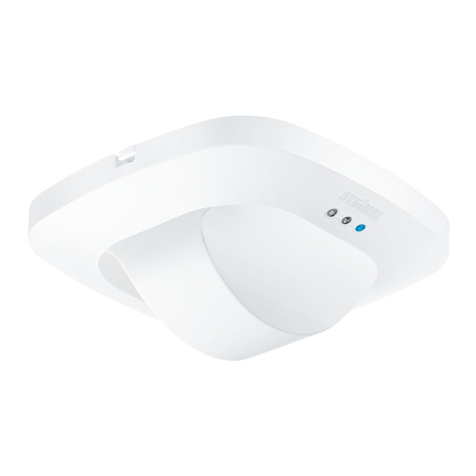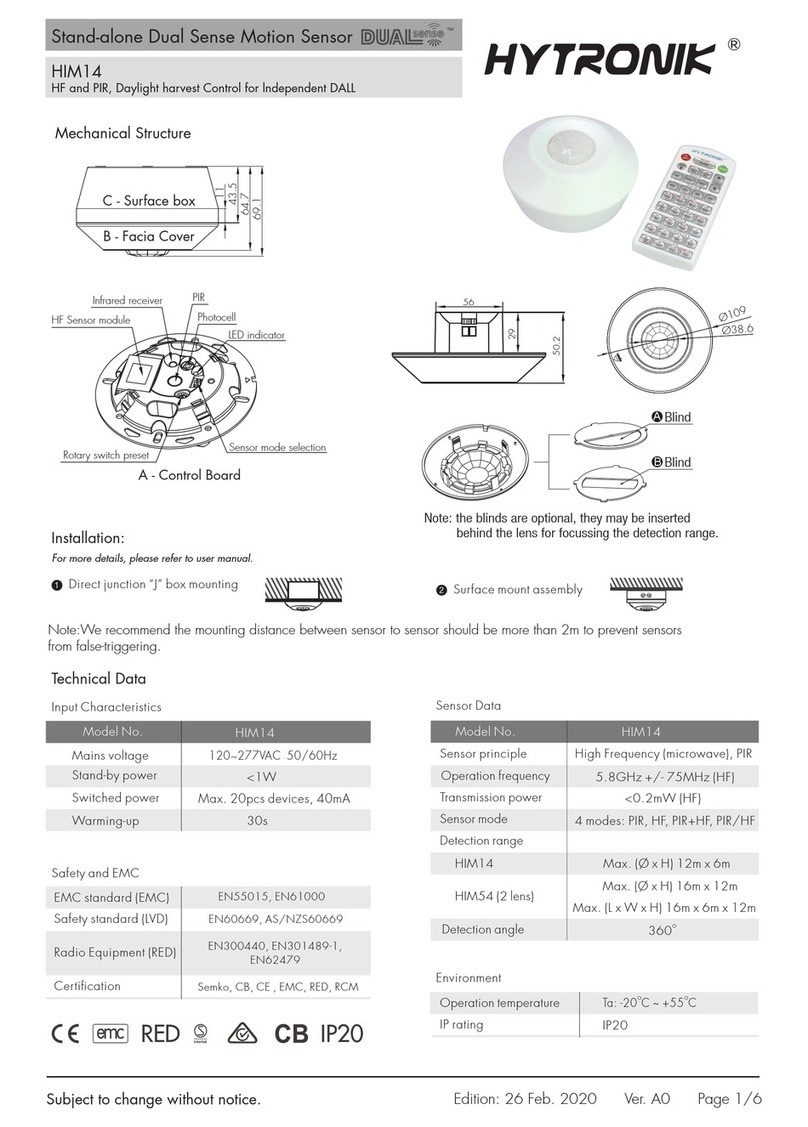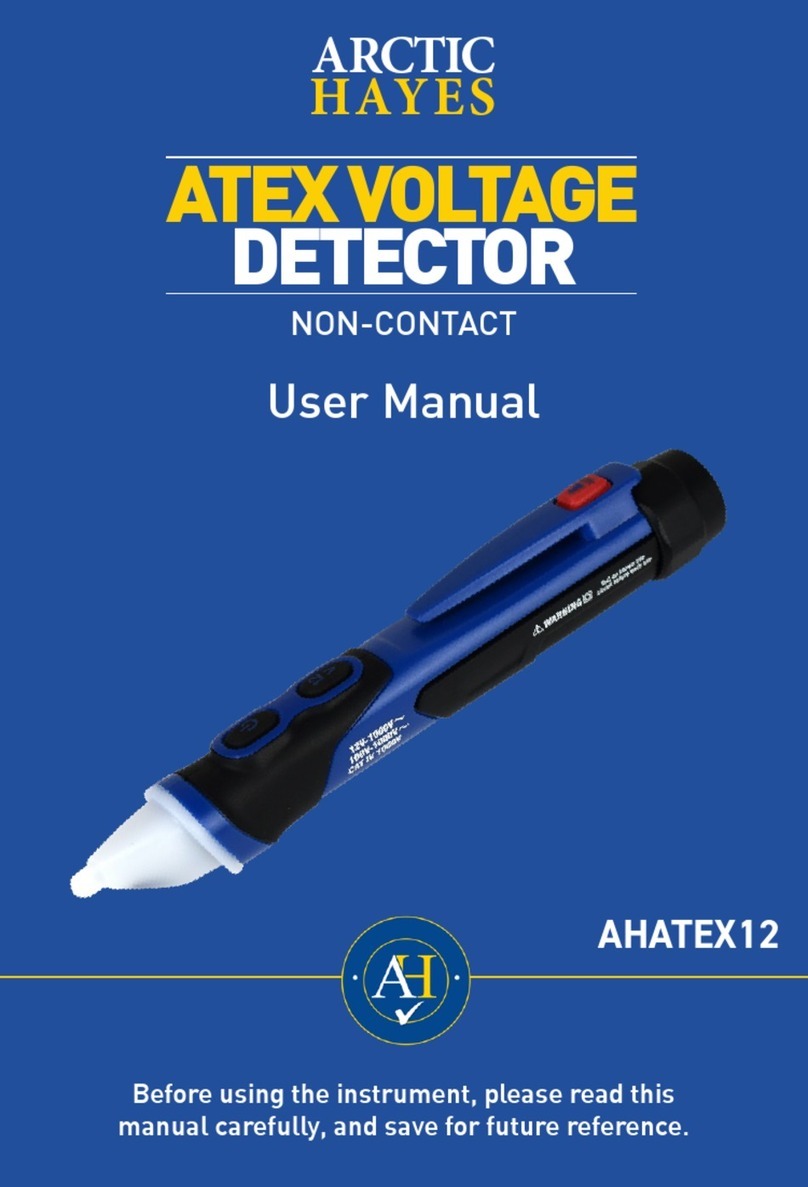
20 Delayline Detector DLD6060-8S Manual | Surface Concept GmbH
5.2 Basic Operational Modes of the Delayline Detector
5.2.1 2D(x, y) Area Detection
The arrival times of pulses per event at the 4 ends of the DLD meander/ quadrant are subtracted in order
to determine a position in x and y (x: tx1-tx2; y: ty1-ty2). The 4 TDC stop signals are grouped internally in
pairs to form the x- and y-coordinates. All DLD software adjustments are done by the end-user software
according to the user’s chosen parameters.
5.2.2 3D(x, y, t) Time Resolved Imaging
The Delayline Detector may measure all events in temporal reference to an external clock. For this mode,
the user needs to start the TDC by an external clock, providing a low jitter LVTTL signal to the start input
of the TDC.
Time measurements are performed by summing up the arrival times of pulses at the end of the DLD
meanders, i.e. the same results which are used to determine positions for each event are summed. It is
possible to sum only tx1 and tx2 (tsumx) or ty1 and ty2 (tsumy), because both sums should carry the same
temporal information of a time related experiment. The total sum t(DLD) of all four time measurements
(tx1, tx2, ty1, ty2) may be a good choice as well. The results of all those time sums correspond to t(sum)
= t(oset) + t(hit), where t(hit) is the interesting time (e.g. ToF) in a given experiment and t(oset) is a
device related constant, which depends on cable lengths, electronics propagation times, experimental
setup etc. Therefore, it is possible to completely determine position and time of each event from only 4
precise time measurements. The software can group all measured time sums in plain 1D time histograms,
which are valid for the chosen region of interest (ROI) with the correct time bin unit. The time bin unit
for each single readout channel is around 27ps, but due to the calculation of the tsums and t(DLD), the
time axis is expanded virtually (simplied expression). Therefore the channel width in the 1D histogram
is dierent for the tsumx, tsumy and t(DLD) histograms. The correct value for a current setting is always
shown by the software. The t(DLD) signature can be used in order to setup the regions of interest in time
for measurements of time resolved images. The software is able to sample 3D histograms as image stacks
in time, where each image corresponds to one channel width of the t(DLD) time histogram.
5.2.3 Specialties of the 8S Detector Anode
The anode of an 8S Delayline Detector diers by a special segmentation of the meander system as well as
by a second, rotated meander system.
In opposite to a single Delayline Detector anode consisting of a single meander for the x and for the y
direction, the 8S anode has two seperated meanders for each direction x and y.
In addition it has a complete second set of x and y meanders, rotated by 45° (R) anticlockwise in respect to
the normal 0° system (N). Detailed information of the meander segmentation and orientation is given in
Chapter 6.




















